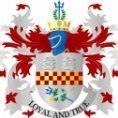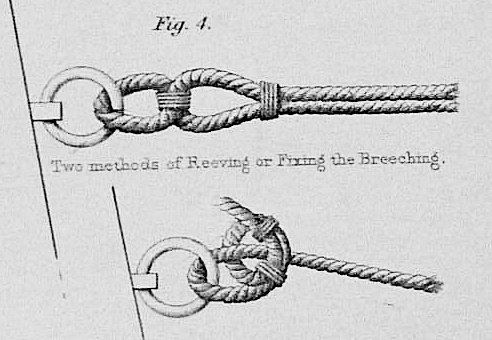-
Posts
5,532 -
Joined
-
Last visited
About BANYAN
- Birthday 06/20/1955
Profile Information
-
Gender
Male
-
Location
Melbourne, Victoria
-
Interests
Family, Fishing, Woodwork and Photography
Contact Methods
-
Skype
pat_sma
Recent Profile Visitors
-
 BANYAN reacted to a post in a topic:
Micro-Mark Desktop Dust Collection System
BANYAN reacted to a post in a topic:
Micro-Mark Desktop Dust Collection System
-
 BANYAN reacted to a post in a topic:
Sloop Speedwell 1752 by Chuck - Ketch Rigged Sloop - POF - prototype build
BANYAN reacted to a post in a topic:
Sloop Speedwell 1752 by Chuck - Ketch Rigged Sloop - POF - prototype build
-
 Mark P reacted to a post in a topic:
Trireme Olympias by Richard Braithwaite
Mark P reacted to a post in a topic:
Trireme Olympias by Richard Braithwaite
-
 BANYAN reacted to a post in a topic:
Sloop Speedwell 1752 by Chuck - Ketch Rigged Sloop - POF - prototype build
BANYAN reacted to a post in a topic:
Sloop Speedwell 1752 by Chuck - Ketch Rigged Sloop - POF - prototype build
-
 mtaylor reacted to a post in a topic:
18th-Century Merchantman Half-Hull Planking Project by mtaylor - NRG
mtaylor reacted to a post in a topic:
18th-Century Merchantman Half-Hull Planking Project by mtaylor - NRG
-
 BANYAN reacted to a post in a topic:
Trireme Olympias by Richard Braithwaite
BANYAN reacted to a post in a topic:
Trireme Olympias by Richard Braithwaite
-
 BANYAN reacted to a post in a topic:
Bending hard brass.
BANYAN reacted to a post in a topic:
Bending hard brass.
-
 BANYAN reacted to a post in a topic:
Mary Rose by Baker - scale 1/50 - "Your Noblest Shippe"
BANYAN reacted to a post in a topic:
Mary Rose by Baker - scale 1/50 - "Your Noblest Shippe"
-
 BANYAN reacted to a post in a topic:
The San Marco mosaic ship c. 1150 by Louie da fly - 1:75
BANYAN reacted to a post in a topic:
The San Marco mosaic ship c. 1150 by Louie da fly - 1:75
-
 Dave_E reacted to a post in a topic:
18th-Century Merchantman Half-Hull Planking Project by mtaylor - NRG
Dave_E reacted to a post in a topic:
18th-Century Merchantman Half-Hull Planking Project by mtaylor - NRG
-
 Mr Whippy reacted to a post in a topic:
18th-Century Merchantman Half-Hull Planking Project by mtaylor - NRG
Mr Whippy reacted to a post in a topic:
18th-Century Merchantman Half-Hull Planking Project by mtaylor - NRG
-
Great way to rekindle those memories Mark; good luck with this project. cheers Pat
- 4 replies
-
- half hull
- half hull planking project
-
(and 1 more)
Tagged with:
-
 BANYAN reacted to a post in a topic:
18th-Century Merchantman Half-Hull Planking Project by mtaylor - NRG
BANYAN reacted to a post in a topic:
18th-Century Merchantman Half-Hull Planking Project by mtaylor - NRG
-
 mtaylor reacted to a post in a topic:
SMS WESPE 1876 by wefalck – 1/160 scale - Armoured Gunboat (1876) of the Imperial German Navy as first commissioned
mtaylor reacted to a post in a topic:
SMS WESPE 1876 by wefalck – 1/160 scale - Armoured Gunboat (1876) of the Imperial German Navy as first commissioned
-
What a great result Eberhard; thanks for stepping us through the process. It looks very effective/realistic, especially at that scale. cheers Pat
-
 BANYAN reacted to a post in a topic:
SMS WESPE 1876 by wefalck – 1/160 scale - Armoured Gunboat (1876) of the Imperial German Navy as first commissioned
BANYAN reacted to a post in a topic:
SMS WESPE 1876 by wefalck – 1/160 scale - Armoured Gunboat (1876) of the Imperial German Navy as first commissioned
-
 Retired guy reacted to a post in a topic:
Steam Yacht Cangarda 1901 by KeithAug - Scale 1:24 - 1901/2008
Retired guy reacted to a post in a topic:
Steam Yacht Cangarda 1901 by KeithAug - Scale 1:24 - 1901/2008
-
 Beef Wellington reacted to a post in a topic:
HMS Jason by Beef Wellington - Caldercraft - 1:64 - Artois-class frigate modified from HMS Diana 1794
Beef Wellington reacted to a post in a topic:
HMS Jason by Beef Wellington - Caldercraft - 1:64 - Artois-class frigate modified from HMS Diana 1794
-
 mtaylor reacted to a post in a topic:
Trireme Olympias by Richard Braithwaite
mtaylor reacted to a post in a topic:
Trireme Olympias by Richard Braithwaite
-
 Glen McGuire reacted to a post in a topic:
Trireme Olympias by Richard Braithwaite
Glen McGuire reacted to a post in a topic:
Trireme Olympias by Richard Braithwaite
-
A stunning build Richard; an exemplar of how to build such a model. I have very much enjoyed this build log so far. cheers Pat
-
That is some 'plodding along' Ian, looks great. cheers Pat
- 502 replies
-
- Quadrireme
- radio
-
(and 1 more)
Tagged with:
-
Great diorama Greg; have to agree that wake looks really convincing. cheers Pat
- 47 replies
-
- Zumwalt
- Snowman Model
-
(and 2 more)
Tagged with:
-
Nice work Jerry, looks great. I like the printed 'races'/tracks. cheers Pat
- 524 replies
-
- sloop of war
- constellation
- (and 9 more)
-
Hi Ian, I cannot recall where now, but I managed to buy just a few sheets from an online supplier. If I find some time, I will dive into my records to see if I can find the supplier - but I am not hopeful. cheers Pat
- 502 replies
-
- Quadrireme
- radio
-
(and 1 more)
Tagged with:
-
Ian would not a self-made decal work to maintain the uniformity of the eyes. The decals, once applied, can be sealed with a spray-on or brushed varnish /clear coat for protection. I have had success printing my own decals for small toys etc that I make for the grandkids. The decal paper is relatively cheap and readily available online. I printed mine using a laser jet printer, but I think there are decal papers for other types of printers also. That said, hand painted adds a sense of realism. cheers Pat
- 502 replies
-
- Quadrireme
- radio
-
(and 1 more)
Tagged with:
-
Incredible detail at that scale, and well painted I may add. cheers Pat
- 212 replies
-
Hi folks, does anyone know if Donna has returned to the business yet? I have tried contacting her several times (two different email addresses) but have not heard anything back. Grieving can take a while to come to grips with, and I fully understand if she has decided not to return yet - simply asking. I do not wish to pester her with emails until she is comfortable. cheers Pat
About us
Modelshipworld - Advancing Ship Modeling through Research
SSL Secured
Your security is important for us so this Website is SSL-Secured
NRG Mailing Address
Nautical Research Guild
237 South Lincoln Street
Westmont IL, 60559-1917
Model Ship World ® and the MSW logo are Registered Trademarks, and belong to the Nautical Research Guild (United States Patent and Trademark Office: No. 6,929,264 & No. 6,929,274, registered Dec. 20, 2022)
Helpful Links
About the NRG
If you enjoy building ship models that are historically accurate as well as beautiful, then The Nautical Research Guild (NRG) is just right for you.
The Guild is a non-profit educational organization whose mission is to “Advance Ship Modeling Through Research”. We provide support to our members in their efforts to raise the quality of their model ships.
The Nautical Research Guild has published our world-renowned quarterly magazine, The Nautical Research Journal, since 1955. The pages of the Journal are full of articles by accomplished ship modelers who show you how they create those exquisite details on their models, and by maritime historians who show you the correct details to build. The Journal is available in both print and digital editions. Go to the NRG web site (www.thenrg.org) to download a complimentary digital copy of the Journal. The NRG also publishes plan sets, books and compilations of back issues of the Journal and the former Ships in Scale and Model Ship Builder magazines.









